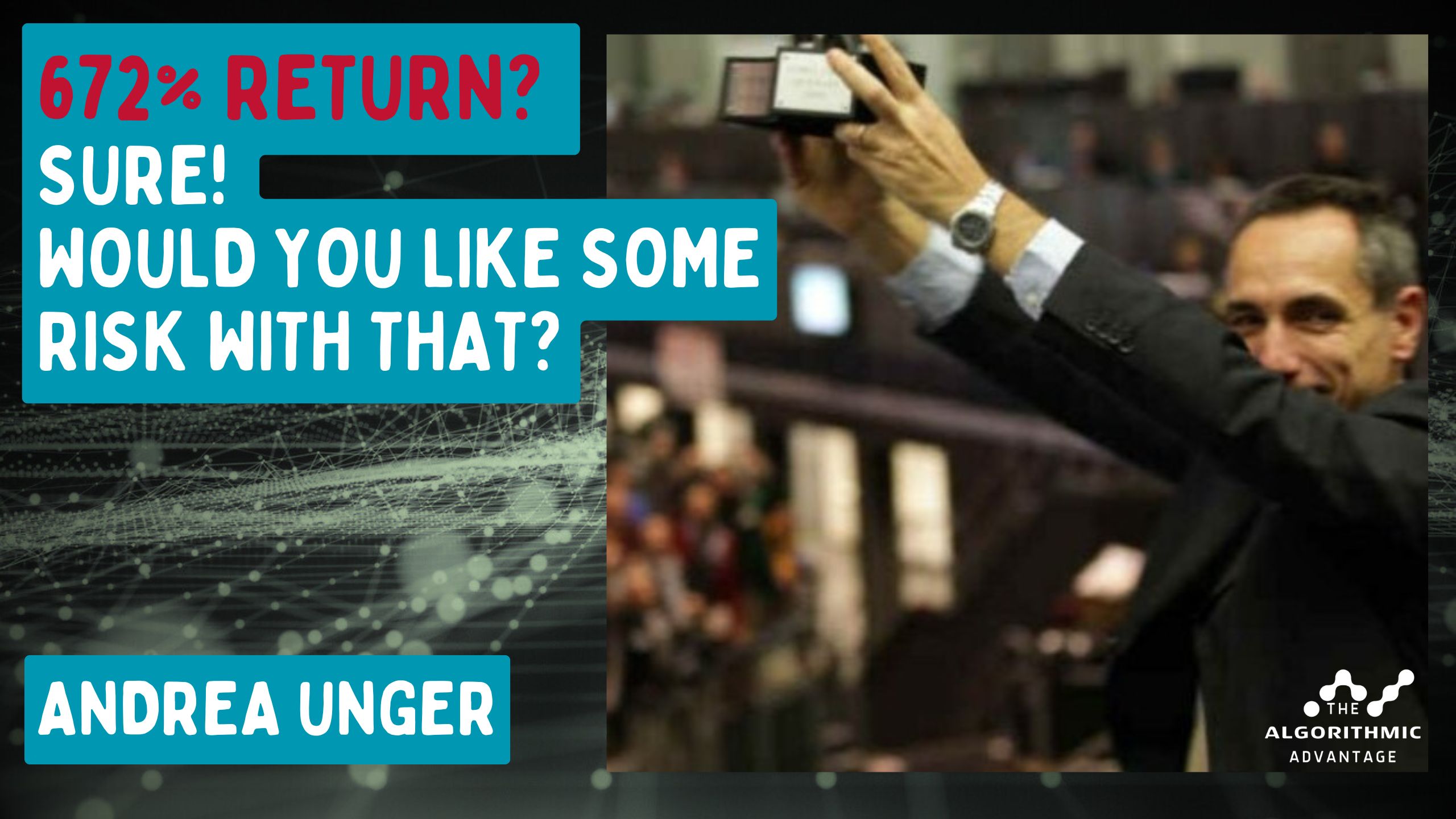038 - Andrea Unger - 672% Returns? Sure! Would You Like Some Risk with That?

Logical Strategies - Always Changing
Finishing our little mini-series on shorter-term futures trading we talk to Andrea Unger and happily inject some click-bait in the form of gloating about his 672% return in a single year when he won the World Trading Competition. Naturally, we know that this kind of return is generated by specifically trying to win the comp, and taking on the associated risks! If you've been asleep the first two guests in this series were Bob Pardo and Kevin Davey. Between the three we've got a complete masterclass in shorter-term, diversified and responsive futures trading!
Andrea Unger is actually a four-time World Trading Champion, and here he offers a comprehensive and structured approach to quantitative trading in futures markets, emphasizing practical methods for strategy design, robustness testing, portfolio construction, and system deployment.
Strategy Design Principles
Unger recommends starting strategy development with simple, robust ideas, such as breakout or reversal setups (e.g., buy yesterday's high breakout). The initial goal is to validate whether the strategy shows a basic statistical edge, focusing purely on system behavior without initially considering transaction costs.
He refines strategies by introducing context-based rules derived from historical market conditions. These conditions must be logically sound and market-related, not merely optimized parameters. For instance, strategies might incorporate rules based on volatility conditions or recent directional trends. Unger maintains a library of market patterns (e.g., performance after low volatility days), which he tends to use as setups rather than indicators.
Strategies are explicitly matched to market behavior—trend-following approaches for inherently trending markets like crude oil, counter-trend or mean-reversion strategies for typically mean-reverting markets like the E-mini S&P 500. Unger diversifies timeframes (intraday to multi-day) but cautions against expecting fractal behavior across timeframes, stressing that shorter timeframes are noisy, but can be used primarily to enhance entry precision rather than profitability.
Position Sizing and Risk Management
Position sizing follows conservative, fixed fractional risk principles, typically risking no more than 1% of account equity per trade based on worst-case historical losses or drawdowns. Unger emphasizes validating a strategy's average trade size first, ensuring it exceeds trading costs, before increasing leverage. Portfolio comparisons normalize risk across strategies by adjusting contract sizes so each system risks roughly the same percentage per trade. Drawdown tolerance guides maximum permissible leverage rather than performance optimization alone, helping to manage the cumulative risk inherent in running multiple strategies simultaneously.
Robustness Testing and Validation
Unger employs rigorous in-sample/out-of-sample testing but typically avoids traditional walk-forward optimization due to the discrete, pattern-based nature of his systems. Instead, he uses parameter stability tests—small adjustments around chosen parameters—to ensure systems remain profitable and robust against minor variations in market conditions.
Additionally, Unger validates systems by perturbing historical price data slightly (randomized data tests), confirming that slight market data shifts don't significantly degrade performance. He prefers systems whose results remain stable across these variations rather than extreme outliers, thereby ensuring realistic robustness.
Systems showing excessively optimistic backtest results are critically re-examined to rule out data or methodological biases. He explicitly cautions against deceptive strategies tested on exotic charts (e.g., Renko), which might not realistically represent live trading conditions.
Strategy Diversification
Unger actively diversifies across approximately 30-40 liquid futures markets spanning equities, fixed income, currencies, energy, metals, and agriculture. Each market typically hosts multiple strategy types—trend-following, mean-reversion, breakout, and volatility-based methods—to ensure comprehensive market condition coverage. Further diversification occurs through varied trading timeframes—short-term intraday (5 to 15-minute bars), medium-term (hourly), and daily bars—ensuring reduced dependency on single market behaviors or short-term volatility cycles.
Portfolio Construction
Unger employs two proprietary portfolio management tools (only available to his students)—Titan and Zeus—built on MATLAB for strategy selection, portfolio construction and risk management. Both tools systematically rank strategies by recent performance momentum, applying strict performance criteria (e.g., profitability over the last x months).
Zeus, if I understood correctly, considers practical correlations—evaluating simultaneous market exposure, actual trade overlap, and hedging effects. Zeus thus maximizes capital utilization, ensuring smaller accounts can optimally leverage micro-futures to achieve broader diversification without exceeding margin or risk limits. I think tools like this must be built by those taking this kind of trading seriously, given the likes of Trade Station and Multi Charts just can't handle it. Another option might simply be to save and then import equity curves into software like Amibroker or Real Test to analyse and optimize the portfolio of return streams in a systematic way. Mmmm that's worth thinking about actually, I'd be interested in hearing from you if you've tried that!
Like with Kevin Davey, monthly portfolio reviews dynamically rotate strategies, systematically replacing underperforming systems with better alternatives. Manual overrides occur sparingly, guided by strategic insights rather than short-term performance whims.
System Deployment and Maintenance
Unger transitioned from manual execution to full automation around 2010, significantly enhancing execution consistency and scalability. Automated strategies run continuously on a cloud server environment, minimizing manual errors and execution latency. Continuous supervision ensures system integrity, focusing on monitoring for execution errors, order management issues, and ensuring strategy alignment with historical expectations. Intervention is minimal, and system adjustments are avoided during live trading to prevent reactive overfitting.
Strategies experiencing significant performance degradation are systematically retired rather than hastily "patched." Unger either entirely redevelops concepts in response to persistent market regime shifts or fully retires ineffective strategies. This disciplined lifecycle management ensures strategy integrity remains intact. I must admit, I'm beginning to like this theme of strategy rotation: I particularly like that poor performing strategies are automatically retiring themselves and there's no need to think about when to stop trading them.
Technology Stack
Unger’s technology infrastructure leverages MultiCharts for strategy development and execution, capitalizing on reliable historical data, backtesting accuracy, and robust live execution capabilities (with Interactive Brokers).
MATLAB supports custom portfolio analysis, incorporating extensive matrix operations and strategy selection logic (Titan and Zeus tools). This environment allows rigorous, data-driven decision-making regarding strategy deployment and portfolio optimization.
A dedicated VPS/cloud server provides robust, continuous connectivity for executing automated strategies, ensuring low downtime and reliable execution. Rigorous version control and distinct testing and live environments protect strategy integrity, enabling systematic and disciplined trading operations.
Practical Takeaways for Quant Traders
• Begin strategies simply and enhance logically rather than through blind optimization.
• Position sizing must strictly control per-trade and cumulative risk, focusing on worst-case scenarios.
• Robustness tests should include both parameter stability checks and data perturbations to prevent overfitting.
• Diversification is crucial—across strategies, markets, and timeframes—to smooth performance and mitigate risks.
• Portfolio management should prioritize correlation management and dynamic strategy rotation based on systematic performance metrics.
• Full automation combined with disciplined supervision and minimal manual intervention is vital for consistency.
• Strategic "retirement" of failing strategies prevents portfolio degradation, with redevelopment preferred over reactive adjustments.
Following these structured guidelines offers quant traders a disciplined, robust framework for systematic futures trading, aligning real-world practicality with rigorous quantitative principles.
Get in Touch with Andrea
